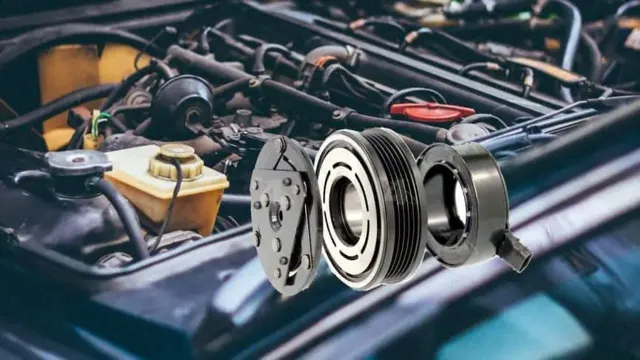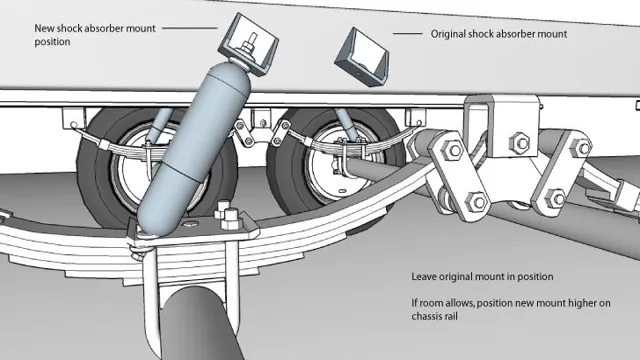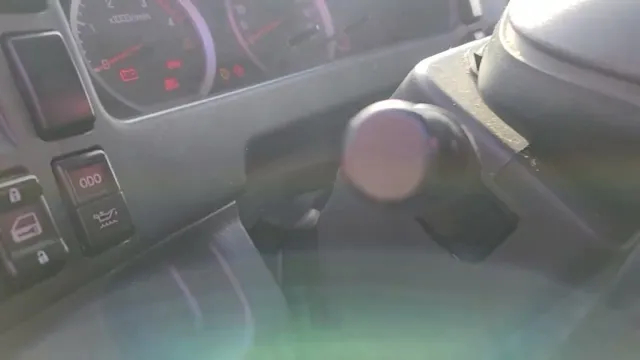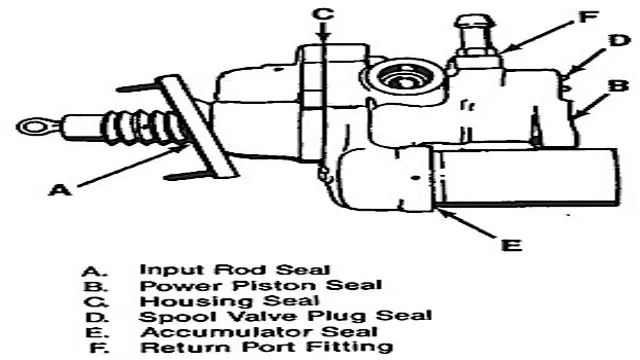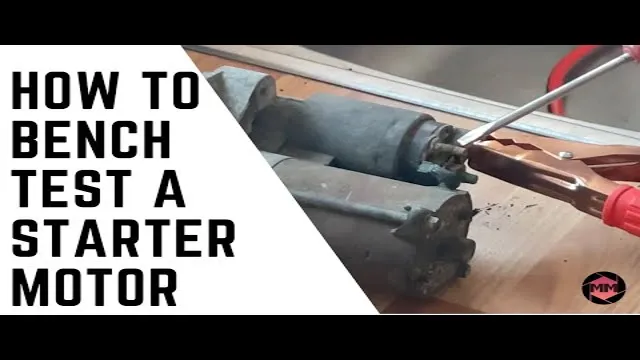Ultimate Guide: How to Clean a Serpentine Belt for Maximum Performance
Is your car making strange noises or not functioning as efficiently as it used to? One possible culprit could be your serpentine belt. Over time, this crucial component of your engine can accumulate dirt, debris, and even oil, leading to slips and reduced performance. But don’t worry, cleaning your serpentine belt is easier than you might think and can save you from costly repairs down the line.
In this how-to guide, we’ll walk you through the steps to effectively clean your serpentine belt and get your car running smoothly again. So grab your tools and let’s get started!
Why Clean Your Serpentine Belt?
If you’re wondering why you need to clean your serpentine belt, there are a few reasons why this maintenance task is essential. First and foremost, a dirty belt can lead to decreased performance and efficiency. The belt may slip or fail to rotate properly, causing the engine to work harder and reducing overall power output.
Additionally, a dirty belt can cause excess wear and tear on other engine components, leading to costly repairs down the line. To clean your serpentine belt, start by inspecting it for any visible signs of damage or wear. Then, use a soft brush and mild detergent to gently clean the surface of the belt.
Avoid harsh chemicals or abrasive materials, which can cause more harm than good. Finally, rinse the belt thoroughly and allow it to dry completely before re-installing. By regularly cleaning and inspecting your serpentine belt, you can help ensure optimal engine performance and prevent costly repairs in the future.
Increased Belt Longevity
Serpentine belt cleaning is a crucial aspect of maintaining your vehicle’s performance. A serpentine belt is responsible for powering various systems, including the alternator, power steering, and air conditioning. When it becomes dirty, it can adversely affect these systems’ performance, leading to increased wear and tear and reduced longevity.
By regularly cleaning your serpentine belt, you can prevent dirt and debris build-up, extend its lifespan, and avoid costly repairs and replacements. Moreover, regular cleaning can also enhance your vehicle’s efficiency, resulting in improved fuel economy and reduced emissions. Therefore, it’s essential to prioritize serpentine belt cleaning as part of your car maintenance routine for enhanced performance and longevity.
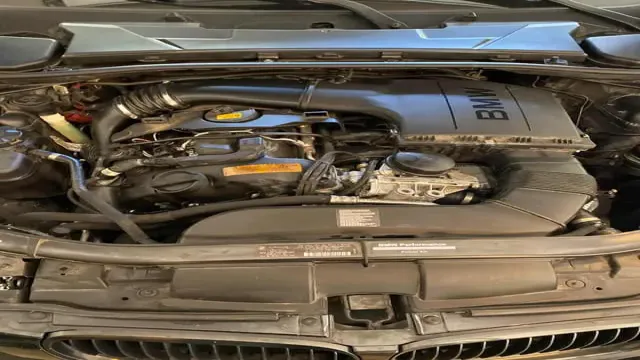
Improved Vehicle Performance
Your vehicle’s serpentine belt plays a crucial role in the overall performance of your car. This long, continuous belt powers a variety of important systems including the alternator, air conditioning, and power steering. Over time, however, it can become dirty and contaminated with oil, dirt, and other debris.
This can cause the belt to slip or break, reducing your car’s performance and potentially damaging other components. By regularly cleaning your serpentine belt, you can ensure that it is running smoothly and efficiently, allowing your car to perform at its best. With improved vehicle performance, you can enjoy a smoother ride, better fuel efficiency, and overall peace of mind knowing that your car is running at its best.
So why not take the time to clean your serpentine belt and keep your car running smoothly?
What You’ll Need to Clean Your Serpentine Belt
If you’re looking to clean your serpentine belt, there are a few things you’ll need to get started. First, you’ll need a clean rag or towel to wipe down the belt. You can use either a microfiber cloth or an old t-shirt that is no longer in use.
Next, you’ll need a spray bottle filled with a mild cleaning solution. You can use water with a drop of dish soap or a specialized cleaner made specifically for serpentine belts. It’s important to note that you should avoid any harsh chemicals or solvents that can damage the belt.
Finally, you’ll need a flashlight to inspect the belt for any cracks or damage that may require a replacement rather than just cleaning. Follow these steps to ensure your serpentine belt remains in good working condition, prolonging its lifespan and saving you money in the long run.
Safety Equipment
When it comes to cleaning your serpentine belt, there are a few safety items that you must have on hand. First and foremost, safety goggles are essential to protect your eyes from any debris or chemicals that might spray while cleaning the belt. In addition, gloves are necessary to keep your hands clean and protected from any solvents that could be used in the cleaning process.
You should also have a dust mask to prevent any fumes or dust particles from being inhaled. Lastly, it’s essential to have a well-ventilated work area to avoid any exposure to harmful chemicals or fumes. Overall, taking the right safety precautions is crucial to protecting yourself while working on your serpentine belt.
So, make sure you have all the necessary equipment before you get started.
Cleaning Supplies
Cleaning your serpentine belt can be a daunting task, but with the right tools and supplies, it can be done quickly and efficiently. The first thing you’ll need is a degreaser. A good degreaser will help break down any oil or grease that has accumulated on your serpentine belt.
It’s important to find one that is safe for rubber, as you don’t want to damage your belt. Next, you’ll need a microfiber towel or soft-bristled brush to remove any dirt or debris that might be sticking to the belt. Be sure to do this gently, as you don’t want to scratch or damage the surface.
Finally, you’ll need a belt dressing to help reduce wear and tear on your serpentine belt. Apply a small amount to the belt and let it dry before starting your engine. By using these three simple cleaning supplies, you can keep your serpentine belt in great condition and extend its life.
How to Clean Your Serpentine Belt
Cleaning your serpentine belt is an important maintenance task that can prolong the life of your vehicle and keep it running smoothly. Over time, dust and debris can build up on your belt, causing it to slip, wear unevenly, and ultimately fail. To clean your serpentine belt, start by locating it under the hood of your car.
Then, use a clean cloth or rag to wipe away any dirt or dust that may have accumulated on the surface of the belt. Be sure to inspect the belt for any signs of damage or excessive wear while you’re cleaning it. If you notice any cracks, fraying, or other signs of wear, you may need to replace the belt entirely.
In addition to regular cleaning, it’s also important to have your serpentine belt inspected by a professional mechanic at least once a year to ensure it’s in good condition and to prevent any potential issues down the road. Remember, a little bit of maintenance can go a long way in keeping your vehicle running smoothly, so don’t overlook the importance of cleaning your serpentine belt.
Preparing Your Vehicle
If you’re looking to give your vehicle a much-needed overhaul, you may want to consider cleaning your serpentine belt. It may not seem like a big deal, but a dirty serpentine belt can cause serious problems for your engine. When dirt and debris accumulate on the belt, it can cause it to slip or even break.
This can lead to a host of problems, such as decreased power and performance, or even complete engine failure. To prevent this from happening, it’s a good idea to clean your serpentine belt every so often. Luckily, this is a fairly simple process that can be done with just a few tools.
First, you’ll need to locate your serpentine belt and remove it from the engine. Then, using a soft brush and some soapy water, gently scrub the belt to remove any built-up grime. Once you’ve cleaned the belt thoroughly, rinse it off with clean water and let it dry completely before reinstalling it.
By taking these simple steps, you can help ensure that your serpentine belt is in good condition and your engine is running smoothly.
Cleaning Your Belt with Soap and Water
Serpentine Belt If you want to keep your car running smoothly, you need to keep your serpentine belt in good condition. One way to do that is by cleaning it with soap and water. First, locate the serpentine belt under the hood of your car.
The belt runs around several pulleys and powers various components such as the alternator and the power steering pump. Once you’ve located the belt, turn off the engine and allow it to cool down. Then, gently rub the belt with soap and water, using a soft-bristled brush to remove any dirt or debris that may have accumulated on it.
Be sure to rinse the belt thoroughly with clean water and allow it to dry completely before starting the engine again. Regularly cleaning your serpentine belt can help extend its lifespan and keep your car running smoothly.
Using Belt Cleaner Spray
Serpentine Belt Cleaner Spray If you want to keep your car running smoothly, it’s important to take care of every part of it, including the serpentine belt. This belt connects all the essential parts of your car’s engine, so if it’s dirty or worn out, you may find yourself with a lot of problems down the line. That’s where a belt cleaner spray comes in handy.
This specialized cleaning spray is designed to remove dirt, grime, and other debris from your serpentine belt, helping it run smoothly and efficiently. Using a belt cleaner spray is a simple process – just spray it directly onto the belt, let it sit for a few minutes, and then wipe it off with a clean cloth. Not only will this help your car run better, but it can also extend the life of your serpentine belt, saving you time and money down the road.
So why not invest in a belt cleaner spray today, and keep your car running smoothly for years to come?
Drying the Belt
Cleaning and maintaining your serpentine belt is crucial for its longevity and proper functioning. One important step in the cleaning process is drying the belt. After cleaning with soap and water, make sure to thoroughly dry the belt to prevent any residual moisture from causing damage or slipping.
A quick and easy way to dry the belt is to use compressed air or a clean cloth to remove any moisture. It’s important to avoid using a heat source such as a hair dryer, as this can cause the belt to crack or harden. Taking the time to properly clean and dry your serpentine belt can save you money and hassle in the long run by ensuring optimal performance and preventing premature wear.
Maintenance Tips for Your Serpentine Belt
If you want to ensure that your car’s serpentine belt functions efficiently and lasts longer, it’s essential to keep it clean regularly. Dirt, grime, and debris can accumulate on the belt surface, causing it to wear down quickly and even crack. A simple technique to clean the serpentine belt is to use a soft-bristled brush or a rag soaked in soapy water.
Gently scrub the belt’s surface to remove any build-up of dirt or debris. Avoid using harsh chemicals or solvents as these can damage the belt’s material, leading to premature wear and tear. Once cleaned, ensure that the belt is dry before you start the engine to avoid slipping or belt failure.
Remember, regular maintenance of the serpentine belt can help prevent unexpected breakdowns and costly repairs, so it’s worth investing a few minutes of your time to keep it clean and well-maintained.
Check for Wear and Tear Regularly
When it comes to maintaining your serpentine belt, one important tip to keep in mind is to check it for wear and tear regularly. Your serpentine belt is crucial for the proper functioning of your engine, so it’s important to check it often to ensure it’s in good condition. Here’s what you should do: locate the belt under the hood of your car, and give it a visual inspection.
Look for any cracks, fraying, or other signs of wear and tear. You should also check for any signs of looseness, as a loose belt can cause all sorts of problems. If you notice any issues, it’s important to have it replaced as soon as possible.
By keeping an eye on your serpentine belt, you can help to ensure that your engine runs smoothly and that your car is safe to drive.
Properly Tension the Belt
Properly Tension the Belt to Prolong Its Life One essential maintenance tip for your serpentine belt is to ensure it is properly tensioned. A loose or worn-out belt can cause squealing noise, slipping, and reduced power steering, and air conditioner performance. To determine the proper tension, use a tension gauge or consult your vehicle manual for specific instructions.
It’s important to keep the tension within the manufacturer’s recommended range to prevent premature wear and tear on the belt and other components. Over-tensioning may cause excessive stress on the belt and lead to early failure, while under-tensioning leads to slippage. A properly tensioned serpentine belt can last up to 100,000 miles, depending on the vehicle model and usage.
Therefore, it’s crucial to check the belt’s tension regularly and adjust it as necessary to ensure maximum performance and prolong its lifespan. Keep in mind that replacing a damaged or worn-out belt promptly can prevent more significant damage or accidents from happening while driving.
Replace the Belt When Necessary
Your serpentine belt is a vital component to the proper functioning of your vehicle’s engine. This belt can become worn, cracked or frayed over time, reducing its effectiveness and causing issues like slipping or squeaking. Regularly checking the condition of your serpentine belt can help prevent these issues, and replacing the belt when necessary can save you from costly repairs.
Signs that it’s time to replace your serpentine belt include cracking, splitting, or shiny glazes on the belt’s surface. You may also notice a loud squeaking sound when you start the engine or put the car in gear. Don’t let a faulty serpentine belt leave you stranded on the side of the road – stay on top of your vehicle maintenance and replace the belt when needed.
Conclusion
In the world of car maintenance, cleaning a serpentine belt may not be the most glamorous task, but it’s essential for keeping your vehicle running smoothly. With a little bit of know-how and the right tools, you can effectively remove dirt and grime build-up from your belt and improve its longevity. So next time your car needs a thorough cleaning, don’t overlook the power of a clean serpentine belt – your car (and your wallet) will thank you in the long run!”
FAQs
What are the signs that my serpentine belt needs cleaning?
Signs that your serpentine belt needs cleaning include squealing or chirping noises, visible cracks or fraying on the belt, or unusual vibrations in the engine.
Can I clean my serpentine belt myself?
Yes, you can clean your serpentine belt yourself with a mild soap and water solution and a soft-bristled brush. Be sure to dry the belt completely before reinstalling it.
How often should I clean my serpentine belt?
The frequency of cleaning your serpentine belt can depend on factors such as weather conditions and driving habits, but it is generally recommended to clean your belt every 6 months to a year.
What should I do if cleaning my serpentine belt does not solve the issue?
If cleaning your serpentine belt does not resolve the issue, it may be time to replace it entirely. A worn or damaged belt can lead to further issues with your engine, so it is important to address the problem promptly.


